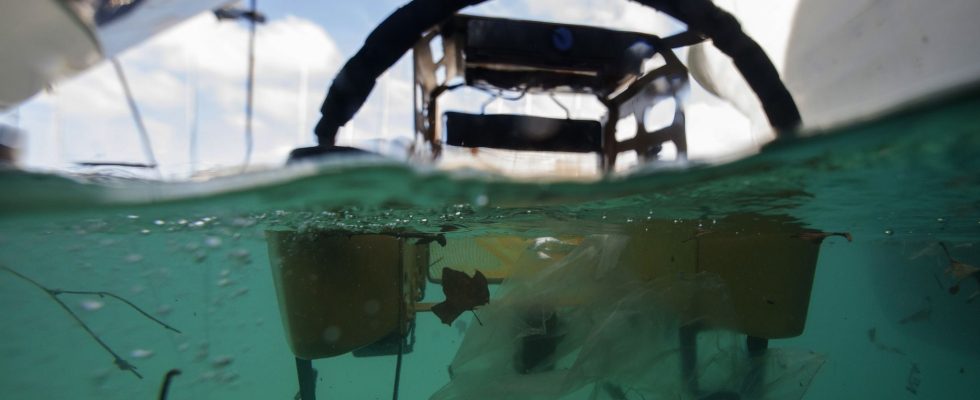We live surrounded by plastic. A versatile material, derived largely from fossil fuels, plastic has many beneficial applications. From medical devices to food preservation to avoid waste, plastic is the most developed recent industrial sector and has had the greatest impact on homes around the world.
However, in recent decades we have mistreated it, extending its use to unnecessary functions. Its consumption has increased exponentially: global production has increased from two million tonnes in 1950 to nearly 500 million in 2023. All over the world, we use materials that take more than 500 years to degrade for uses not for only five minutes. We wrap and overwrap everyday items like water, fruit, meat and fish in plastic. We wrap plastic containers in plastic. There is plastic in the structure of our homes, in the dashboards of our cars, in the fibers of our clothing.
We add chemicals that can be dangerous and combine them with non-recyclable polymers, making their reuse and recycling impossible. The global ecological footprint is permanent, and its cumulative impact is serious for ecosystem life and human health. Plastic pollution in the ocean has increased tenfold since 1980. 85% of waste at sea is plastic, threatening the conservation of species. Whales, dolphins and porpoises, seabirds and turtles mistake this waste for food or become entangled in it. Even the most inaccessible habitats on the planet – from Antarctica to the Mariana Trench – are already being affected by plastic degradation.
Through the food chain, microplastics also find their way into our bodies, with poorly understood consequences for human health. Most plastics receive no treatment at the end of their short lifespan, so the problem of waste accumulation gets worse. If we don’t take urgent action, the 11 million tonnes of plastic that end up in the ocean each year will triple over the next twenty years.
The global problem of plastic pollution is getting worse, but we have the means to meet this challenge. We see civil society organizing large-scale clean-up campaigns to remove plastics from land, rivers and oceans. Successful businesses have been established in partnership with fishing communities on the collection and reuse of marine plastics.
Later, it’s too late
Thanks to research and development, ecodesign avoids the generation of waste and contributes to improving its management. Governments are developing rules for the safe maritime transport of plastic pellets. Cooperation between all these committed actors is part of the solution. But we will not end the problem of this pollution unless we think of solutions to reduce production and consumption to sustainable levels. Global problems, global solutions. On the multilateral front, the High Seas Treaty adopted in 2023 is historic and will help us protect marine biodiversity in international waters. Last December, the Dubai climate summit concluded with a decision laying the foundations for the transition away from fossil fuels. In the ongoing negotiations on the exploitation of seabed resources, we favor the precautionary principle to preserve our world heritage. In line with these advances, it is also time to act with the urgency and ambition necessary to protect the oceans, and our environment more broadly, from plastic pollution.
Two years ago, at the United Nations Environment Assembly, heads of state and ministers from 175 countries adopted a historic resolution: to forge a binding international agreement to end plastic pollution. This mandate, the fruit of multilateral cooperation at its highest level, urges us to bring the negotiations to a successful conclusion in 2024. The world community welcomed this decision because this new treaty will be the most important since the signing of the Paris Agreement. We cannot disappoint them. It is in this context that today, on the occasion of Earth Day, ministers and other high-level representatives are gathered in Ottawa ahead of the fourth round of negotiations. The scientific community has just held the ten-year Ocean Conference in Barcelona. We renewed, during the “Our Ocean” conference in Athens, the commitments of our governments in terms of protecting marine reserves and biodiversity. In June 2025, we plan to meet in Nice for the next UN Ocean Conference with the aim of raising ambition on protection. This is our collective roadmap. It is time to affirm our commitment and put on the table all the political capital necessary for the Ottawa meeting.
In the coming weeks, our negotiators will need to significantly advance text on the scope, measures, financing mechanisms and timelines to end the misuse of plastic globally. Their mandate is to lay the groundwork so that, come December, the world can celebrate the arrival of 2025 as the first year of the era of plastic-free oceans.
Spain and Canada are committed to being unwavering defenders and partners in this effort and, with this momentum, are taking advantage of it to already work with partners, civil society, indigenous peoples and the industry to reach this historic agreement to end plastic pollution. Later, it’s too late.
* Teresa Ribera is the third vice-president of the Spanish government, Minister of Ecological Transition and Demographic Challenge; Steven Guilbeault is Canada’s Minister of Environment and Climate Change.
